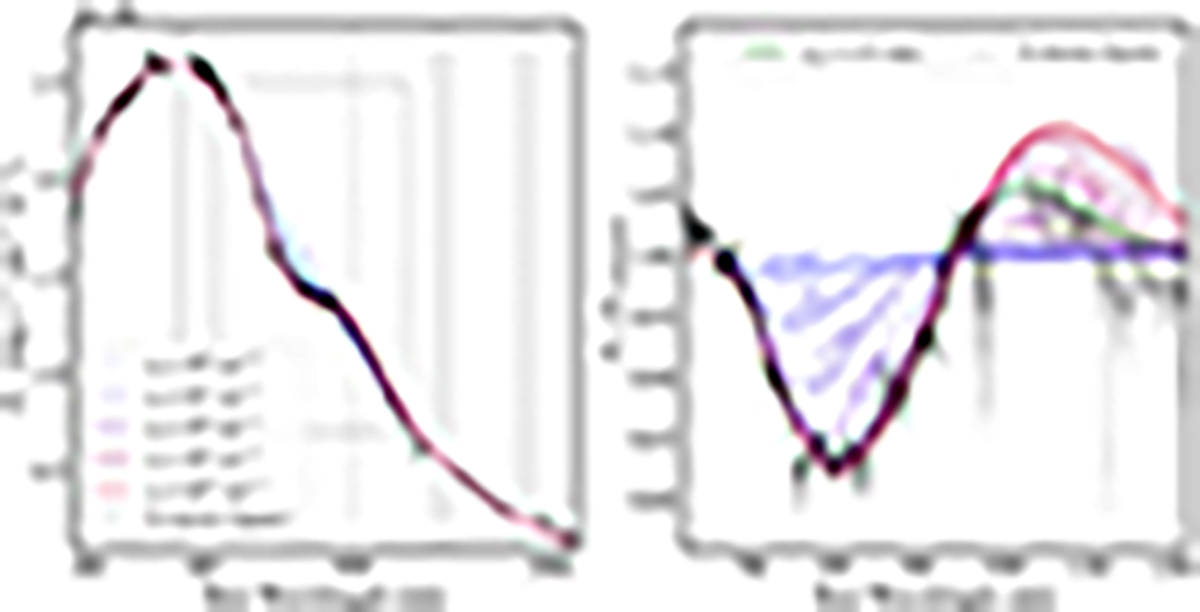Fig. 5.

Download original image
Emergence of a Sr II P Cygni given different electron densities (left) and time post-merger (right). Left: X-shooter epoch 1 spectrum with a model blackbody + Sr II P Cygni feature overlaid. The wavelength-dependent strength of the Sr II feature is modulated by the fractional abundance of singly ionised Sr at the time of observation, tobs = 1.43 days (see Fig. 4). There is only a weak dependence on the electron density as the transition time is a relatively robust prediction in time. This means that the electron density is not tightly constrained, with the majority of the feature indicating a moderate to high electron density of ne ≈ 108 − 109 cm−3. Right: given an electron density ne = 109 cm−3, the corresponding Sr II P Cygni from 0.9 to 1.8 days post-merger in intervals of 0.1 days. The feature rapidly emerges with the reverberation wave, moving from the blueshifted (and nearer) ejecta towards the red. At the time of observation the absorption is fully formed, while the emission is weak due to the decreased fraction of Sr II in the emitting region at the time of emission. This means that the Sr II interpretation can be used to make strong predictions for the timing of the emergence of the feature and the early spectral shape and its evolution.
Current usage metrics show cumulative count of Article Views (full-text article views including HTML views, PDF and ePub downloads, according to the available data) and Abstracts Views on Vision4Press platform.
Data correspond to usage on the plateform after 2015. The current usage metrics is available 48-96 hours after online publication and is updated daily on week days.
Initial download of the metrics may take a while.


